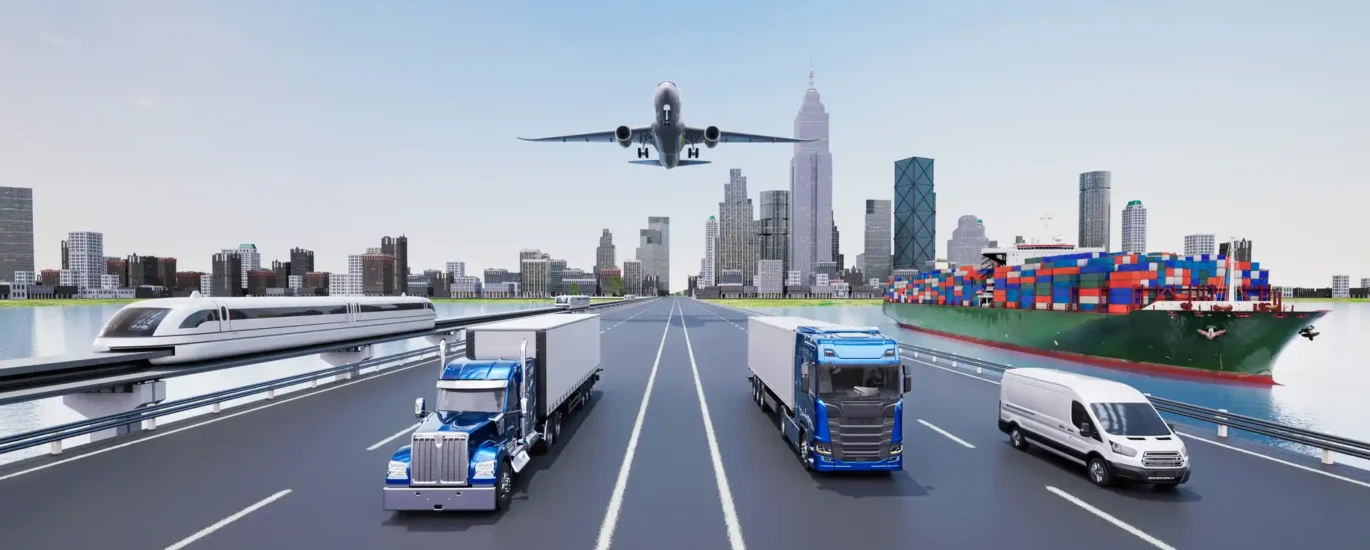Multimodal transport has become an essential solution for businesses looking to simplify and optimize their supply chain. By combining various modes of transport such as maritime, air, rail, and road, multimodal transport offers flexibility, responsiveness, and cost-efficiency. This approach meets the modern logistics challenges, where speed, cost reduction, and environmental sustainability are paramount. In this article, we will explore the advantages of multimodal transport and how it can transform your supply chain.
What Is Multimodal Transport and What Are Its Key Benefits?
Multimodal transport involves using at least two different modes of transport to move goods from point A to point B, with a single contract covering the entire service. This method provides businesses with numerous advantages, including:
- Flexibility: Combining multiple modes of transport allows routes to be adapted based on needs, reducing the risk of delays or disruptions.
- Cost Reduction: By optimizing transport choices, businesses can achieve significant savings, particularly with more competitive options for certain parts of the journey.
- Faster Delivery: Using the most appropriate mode for each stage of transport can streamline transit times, ensuring faster delivery.
- Environmental Impact: Opting for rail or maritime transport, which are less polluting, can significantly reduce the carbon footprint of the supply chain.
Different Transport Modes for an Effective Multimodal Solution
The success of a multimodal transport strategy depends on the careful selection and combination of various transport modes:
- Maritime Transport: Ideal for large quantities over long distances, maritime transport is the preferred option for international shipments. It offers excellent cost-to-volume ratios but can be slower, making it suitable for non-urgent goods.
- Air Transport: While more expensive, air transport is best for urgent, fragile, or high-value goods. It ensures short delivery times, making it the choice for businesses with tight deadlines.
- Rail Transport: Increasingly favored for its environmental benefits, rail transport is a cost-effective and sustainable alternative for long-distance land transport. It is perfect for heavy or bulky goods, while minimizing environmental impact.
- Road Transport: Road transport primarily complements other modes to ensure final delivery. Its ability to reach remote areas or regions lacking port or rail infrastructure makes it an essential option for local and regional deliveries.
Specific Advantages of Each Transport Mode
Each mode of transport has unique benefits that, when combined, optimize the supply chain:
- Cost: Maritime transport is typically the most economical for large volumes, while road transport may be more cost-effective for short distances. Air transport, although more expensive, justifies its cost with speed.
- Time: Air transport is the fastest for international distances, road transport leads for local deliveries, and rail offers competitive speed for long-distance land journeys.
- Flexibility: Road transport is the most flexible in terms of schedules and routes, while maritime and rail are better suited for pre-planned routes.
- Environmental Impact: Rail and maritime transport are the most environmentally friendly options, while air transport, though essential for some needs, remains the most polluting.
Challenges of Multimodal Transport and How to Overcome Them
Although multimodal transport offers many benefits, it also presents challenges:
- Coordination Complexity: Managing multiple transport modes requires good coordination to avoid handling gaps. The solution? Rely on a centralized logistics management platform offering real-time visibility.
- Regulatory Management: Each transport mode is subject to different regulations (customs, weight, safety). Working with an experienced logistics provider helps navigate these constraints effectively.
- Cargo Tracking: Tracking goods in real-time across different modes of transport can be complex. GPS tracking technologies and logistics management software facilitate this process.
Examples of Multimodal Transport in Various Industries
Multimodal transport is adaptable to a wide range of sectors:
- Automotive Industry: The assembly of parts from different continents is well-suited to combining maritime transport for the shipment of parts and road transport for delivery to factories.
- E-Commerce: To guarantee fast international deliveries, e-commerce companies often use a mix of air transport for the main shipment and road transport for final delivery.
- Food Industry: Transporting fresh products can benefit from rail transport for long-distance travel, then road transport for the final stretch to distributors.
Adopt Multimodal Transport for an Optimized Supply Chain
Multimodal transport is an ideal solution for businesses aiming to optimize their supply chain while adapting to the evolving market demands. By combining the strengths of each transport mode, you can not only reduce costs but also improve the speed and sustainability of your deliveries. Trust logistics experts to help implement a multimodal solution tailored to your needs, and enjoy a more efficient and eco-friendly supply chain.










